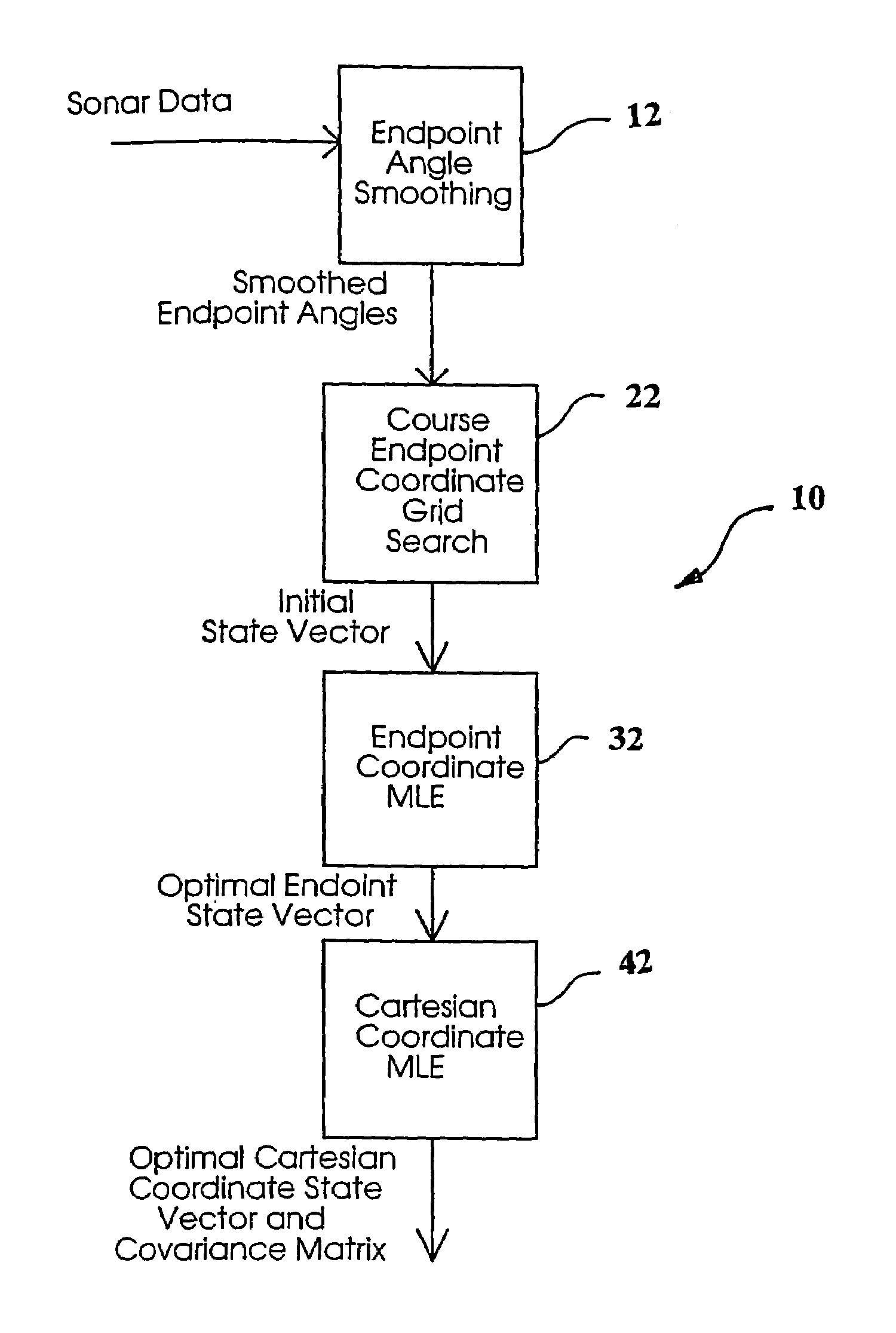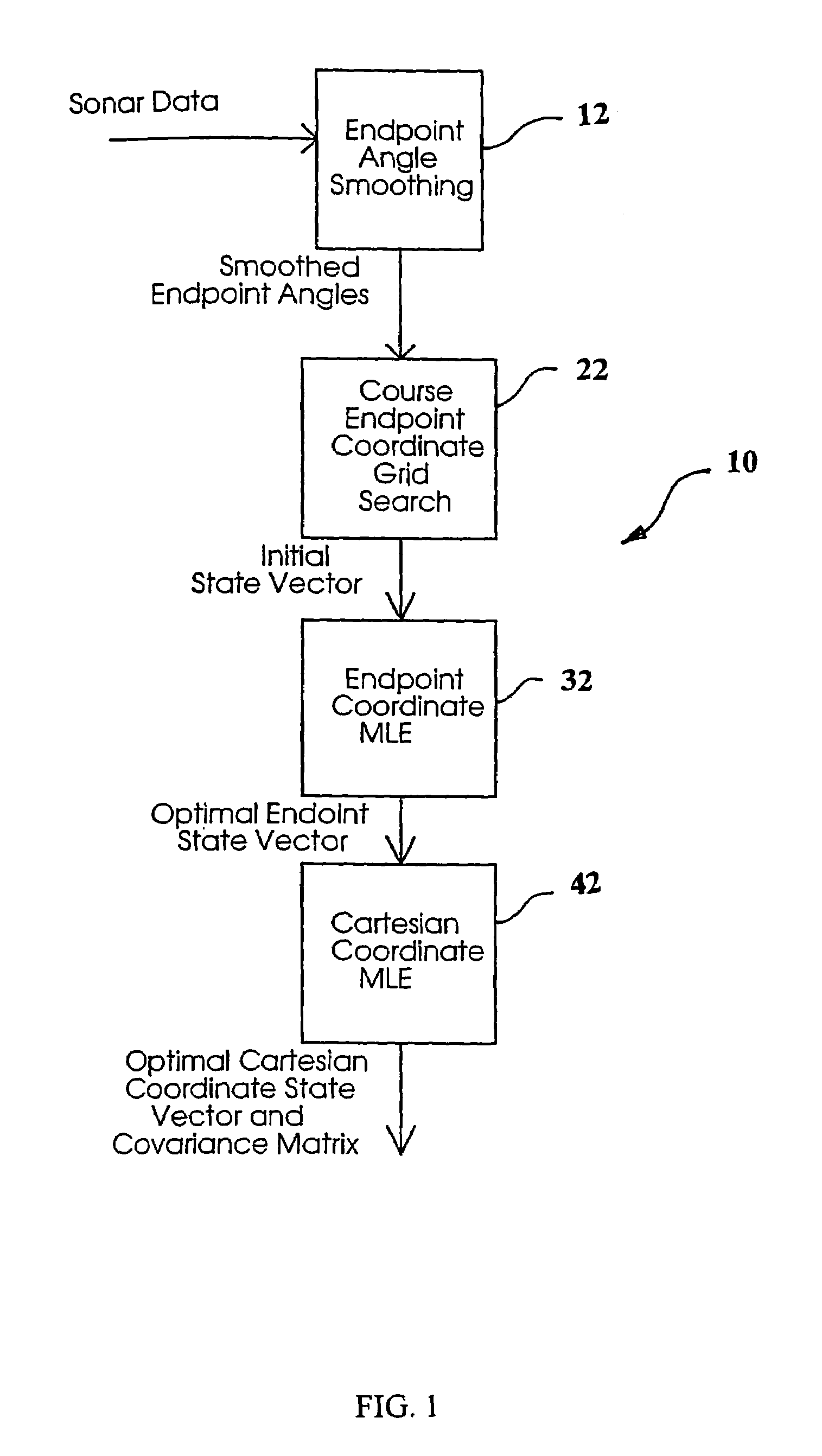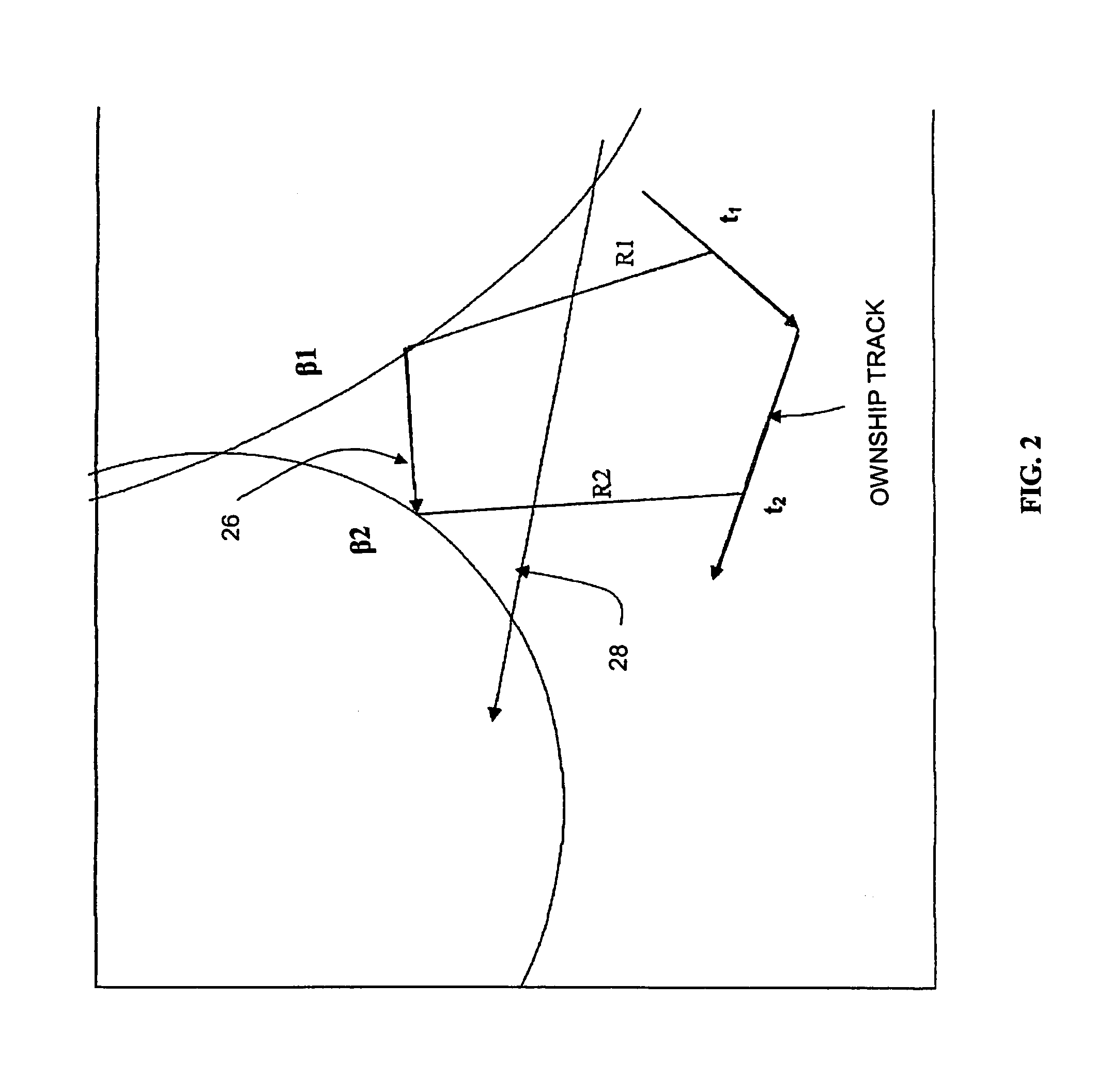Multi-stage maximum likelihood target estimator
a target estimator and maximum likelihood technology, applied in direction finders, instruments, measurement devices, etc., can solve the problems of sequential algorithms not being able to utilize the complete historic dataset, affecting reducing the accuracy of target estimation, so as to achieve the effect of sacrificing the resolution of the target spa
- Summary
- Abstract
- Description
- Claims
- Application Information
AI Technical Summary
Benefits of technology
Problems solved by technology
Method used
Image
Examples
Embodiment Construction
[0022]The multistage maximum likelihood estimator (MLE) processes sonar data and computes a target solution (range, bearing, course, speed) and a localization ellipse by processing data in several stages. The algorithm processes azimuthal bearing measurements, direct path or bottom-bounce conical angle measurements, horizontal range, direct path or bottom bounce frequency measurements from multiple trackers and sonar arrays. Frequency data from a maximum of 2 trackers may be processed. The algorithm constraints include a non-maneuvering target at a known depth, a flat ocean bottom, and an isovelocity environment (straight-line sound propagation). The propagation path is constrained to be either direct path or bottom bounce-on ray reversal and the measurement noise is assumed to be uncorrelated. When measurement data has been partitioned into segments, propagation path hypothesis testing is performed.
[0023]Referring now to FIG. 1, the overall process 10 is depicted showing the four m...
PUM
 Login to View More
Login to View More Abstract
Description
Claims
Application Information
 Login to View More
Login to View More - R&D
- Intellectual Property
- Life Sciences
- Materials
- Tech Scout
- Unparalleled Data Quality
- Higher Quality Content
- 60% Fewer Hallucinations
Browse by: Latest US Patents, China's latest patents, Technical Efficacy Thesaurus, Application Domain, Technology Topic, Popular Technical Reports.
© 2025 PatSnap. All rights reserved.Legal|Privacy policy|Modern Slavery Act Transparency Statement|Sitemap|About US| Contact US: help@patsnap.com



